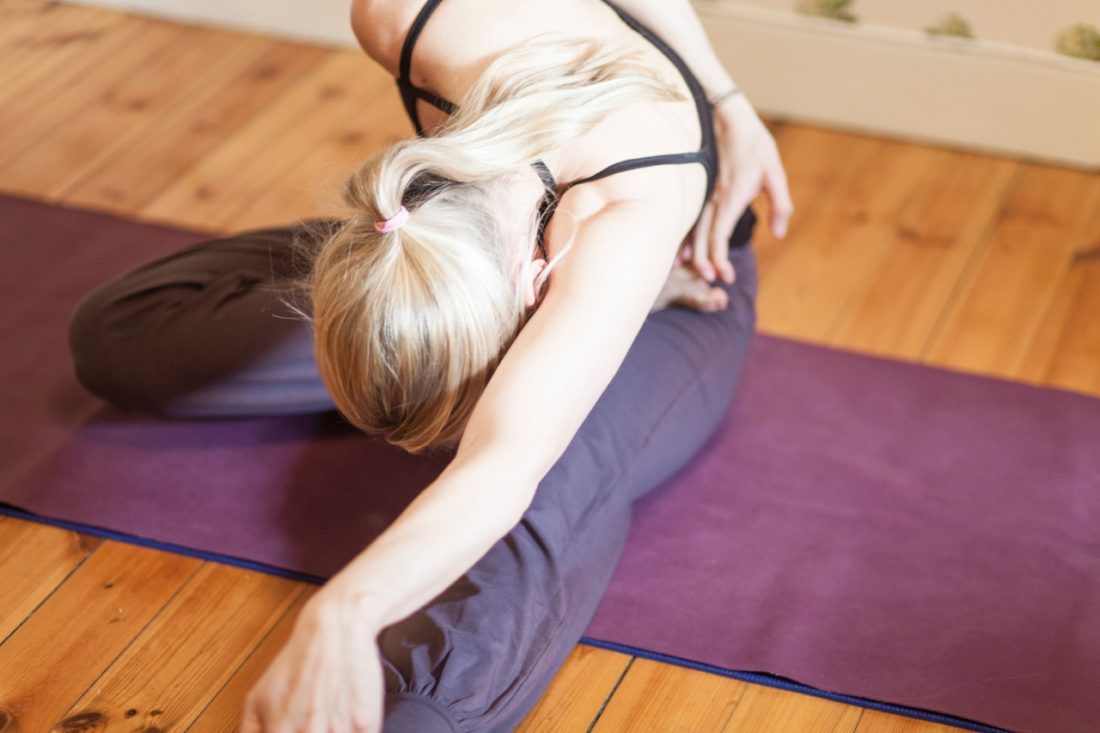
Yoga is good for you – that we know. But what exactly contributes to the overall feel good factor of yoga?
- Improves your flexibility: so what’s the big deal about touching your toes? Take hamstrings, for example. Tight hamstrings can flatten out the lumbar spine, which leads to tightness and pain in the lower back. No wonder then that…
- Yoga can help you get rid of back pain: the discs in between our vertebrae tend to dry out as we age and as we are moving too little. Multi-axial movement like that in yoga asana is the number one cure to nourish and rehydrate them.
- Builds muscle strength: strong muscles protect us from arthritis, back pain and can help prevent falls in older people. In yoga, you are always balancing building muscles with flexibility – keeping your body subtle and mobile.

- Reduced stress levels: stress is one of the biggest killers in the Western world. Relaxed, controlled breathing towards the lower lobes of the lungs, like that applied in yoga, bypasses the stress response.
- Yoga puts you in a good mood: cortisol, which is toxic in high levels and is produced by the stress response, is not only detrimental for cellular health and your immune system, it also has a negative effect on your mood (high cortisol levels have been linked to depression in clinical studies). By reversing the above effect, your mood improves. Not only that, regular yoga practice has been linked to heightened serotonin levels and a decrease in monoamine oxidase (an enzyme that breaks down neurotransmitters).
- Helps you to be less reactive: the Bhagavad Gita, which dates back to the 2nd Century BCE, defines yoga as ‘equanimity’ (jämnmod in Swedish). Through practicing meditation, it is easier to see things as they are and not get attached to the emotions that come with certain situations. Equanimity makes it easier to deal with the ups and downs that life throws at us.
- Keeps your joints happy and healthy: in yoga, you take your joints through their whole range of movement. Joint cartilage is like a sponge – squeezing and releasing it through movement nourishes and hydrates it and can prevent arthritis and cartilage tear.
- Gets your heart rate up: while not all yoga classes get your heart rate into the aerobic range, Vinyasa classes certainly do. Getting regular aerobic activity lowers your risk of heart attack and can relieve depression.
- Can help you keep a stable weight: yoga lowers cortisol levels (see #4 and #5). High cortisol levels lead to ‘food-seeking behaviour’ – the kind of behaviour that drives you to eating when you are feeling stressed, upset or angry. Those extra calories are stored as fat mainly around the abdomen, contributing to weight gain, the risk of diabetes and heart attack.

- Helps you sleep better: mobile phones, ceaseless newsfeeds, 24/7 email availability and social media (as fun as it can be) all add to overstimulation. Too much stimulation is challenging for the nervous system – the constant state of arousal means that our sympathetic nervous system (SNS) induces the fight-or-flight response that once was reserved for meeting a bear in the woods or a snake in a lake, making it hard to come back down and relax. Yoga can help shifting the balance to the parasympathetic nervous system (PNS), which is calming and restorative. It lowers the rate of breathing, the heart rate and even blood pressure. At the same time, it increases blood flow to the intestines and reproductive organs. Restorative classes are a fantastic way to give the nervous system a break.


2 Comments